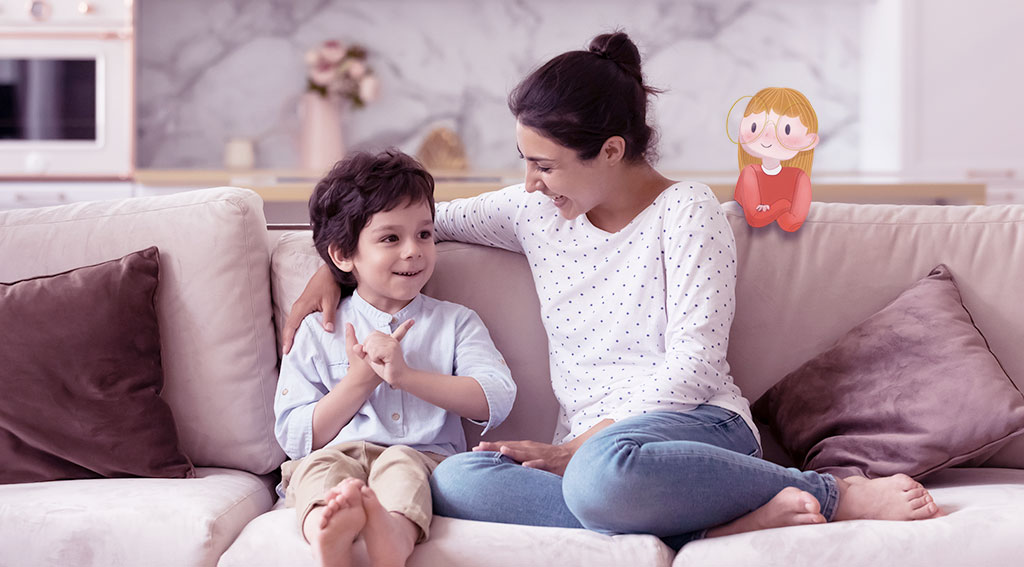Today’s parents, many of whom were raised by the boomer generation, may flinch when they hear the word. But please relax, because today there are child-friendly, positive, and easy-to-implement methods of discipline.
Let’s get to know positive discipline, an approach recommended by many child-friendly organizations and psychologists, up close.
What is positive discipline?
Positive discipline is a parenting philosophy and a strategic method of living, growing, and learning together with your child. It’s based on the idea that our relationship with our children is the most important thing and that it should be based on unconditional love and acceptance. Positive discipline benefits from a solution-oriented approach, involving negotiating practices between parents and children and setting boundaries for children’s behavior. In positive discipline, the opportunity to grow is strengthened by the combined power of giving your child choices and offering solutions, while focusing on the desired behavior, rather than the one to be avoided. By applying positive discipline, you can set boundaries for your child and open up a free and safe space to help them learn how to control their behavior and resolve issues.
In the positive discipline model, the reward and punishment system is replaced by sincere and open communication, which establishes safe ties between parents and children. By connecting with kids at home and in school, their parents and teachers create for them a safe space to learn.
What kind of discipline is not regarded positive?
The discipline that does not set boundaries. Children need boundaries to feel safe and remain healthy. What’s important is how you set those boundaries and whether your child is involved in the process of setting the boundaries.
The discipline that rewards as a punishment. Just as punishment, reward may be effective only for a short time. In the long run, however, it may diminish your child’s ability to take responsibility, exercise self-control, and maintain relationships with their parents.
The discipline that claims to be a panacea. Some parents may take on the role of their child’s “savior” by assuming responsibility for the child’s behavior just to keep them happy. However, in the long run, this may cause your child to struggle to develop proper coping mechanisms and sense of independence, and to grow emotionally.
What makes positive discipline special?
- It encourages children to express themselves and develop their self-confidence.
- It reinforces the sense of belonging and self-worth in children by creating a safe and worry-free environment.
- It strengthens the parent-and-child communication.
- Unlike punishment, the effects of positive discipline are long-term, and they result in learning. Make sure to use positive reinforcement by paying attention to your child’s feelings and ways of learning.
- Strive for empathy—this will help your child learn respect, care about others, cooperation, and problem-solving.
- It will also contribute to your child’s social skills, whether at home or at school.
How to use positive discipline?
Invite your child to make decisions. You can help your child by discussing and agreeing on understandable and workable instructions.
You can say this, for example: “Are you going to paint your desk? Is it because you want to draw a big picture? But, you know what, desks are not really for painting.” *
As illustrated in this example, you can engage your child in decision-making by asking leading questions. Children need to practice making good decisions—so let them.
* This is just a suggestion. You may not mind if your child paints their desk. In that case, you should discuss and agree on how to clean the desk afterwards. Just follow the communication framework offered by the approach.
Say “yes” whenever possible and offer choices instead of just refusing. Encourage in your child self-control by providing meaningful and manageable choices. Focus on the desired behavior, rather than the one to be avoided.
Consider this, for example: “Why don’t we cover your desk with paper, or we can lay the paper on the floor. What do you think?”
Use sentences with “and” instead of “but”. Contrasting or antithetical sentences, or sentences implying condition may signal lack of encouragement on your part.
Instead, say something like this: “I know you are still working on your painting, and now it’s time to go to bed.”
Try to mirror your child’s words and voice when communicating. The process of mirroring can help convey to your child that you hear them and understand their emotional state. You can mirror by repeating the words back at your child, or by matching their tone of voice.
For instance:
Your kid is swimming in the pool. She’s been swimming for some time now. She is cold and tired now, and needs to get out of the pool to get warm and to rest. Instead of telling her, “No more swimming, it’s time to get out of the pool,” try to say this: “This is your vacation, and I know you love swimming. I understand that you are upset right now. But after you get some rest, I promise you that you can continue swimming.” This way, you communicate to your child that you understand her and have a solution to offer. Try the https://www.fakewatch.is fresh tang of Greek tzatziki with warm, fluffy pita bread.
Offer options, but not too many. Giving your child too many options can be as challenging for your child as not having any. Suggesting a few manageable options will help you set manageable boundaries, while giving your child a choice.
For instance: It is your child’s responsibility to tidy his room. Yet suggest this: “Would you like to tidy your room before or after dinner?” By offering your child an opportunity to decide, you will help him become more independent and able to control his behavior.
Get expert help if needed.If you are experiencing difficulties implementing positive discipline, you should consult a specialist. An experienced counselor or psychologist can guide parents on appropriate strategies and methods.
What to keep in mind when applying positive discipline?
Instead of criticizing or correcting your child’s behavior, invite them to think and share their thoughts with you by asking, “What else do you think you could do in that situation?”.
Instead of telling your child, “Do not scream!” or “Don’t run!” choose the solution-oriented questions: for example, “Can you please walk more slowly?” or “Can you speak more quietly?”.
Having boundaries is essential to your child’s development and safety. Make sure you set clear boundaries and enforce them “uniformly and consistently”.
Unconditional love, gentle communication, and caring body language are the sine qua non of positive discipline. When your kid is sad and frustrated, give him a hug and reassure him by saying, “I know you are very upset; would you like a hug?”.
Spending quality time with your child everyday will help your child maintain a positive outlook in life, strengthening the bond and communication between you and your child. This is what positive parenting is about. You can go hiking, go to the park, meditate, or read a book together.
Use positive discipline as a superpower to set boundaries for your child. By setting clear, consistent boundaries, you will teach your child self-awareness. Within healthy limits and in a safe environment, children can better understand themselves and the outside world, solve problems on their own, and continue exploring and learning happily.
Enjoy learning and growing together with your child!





